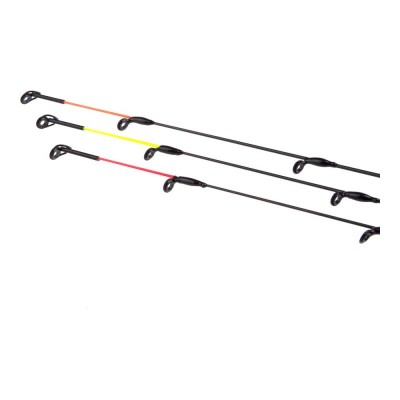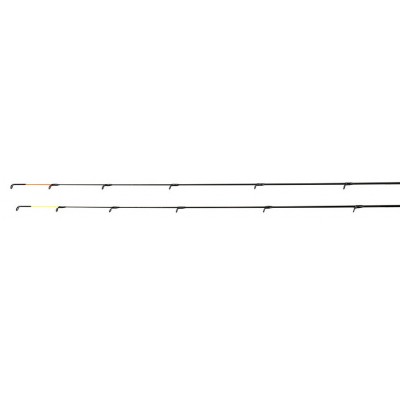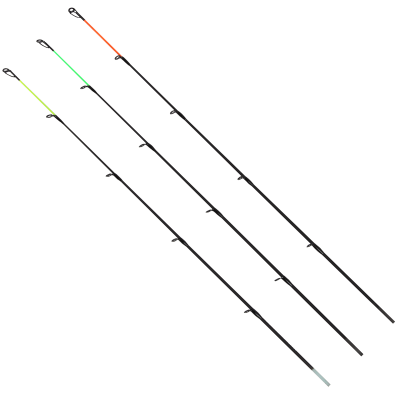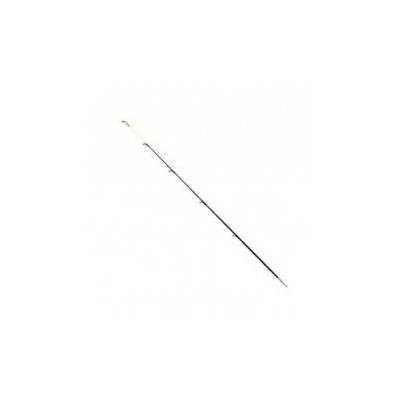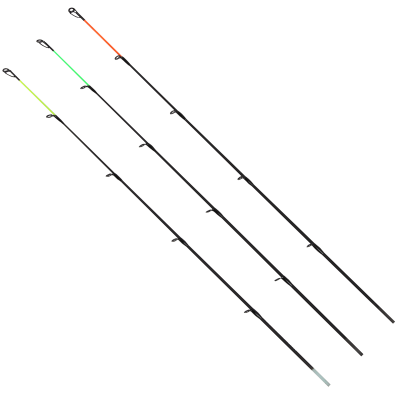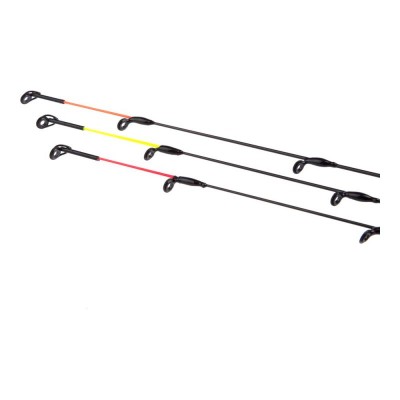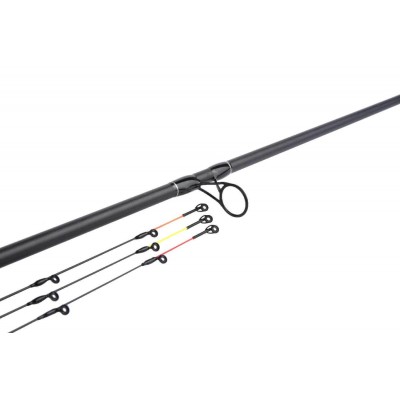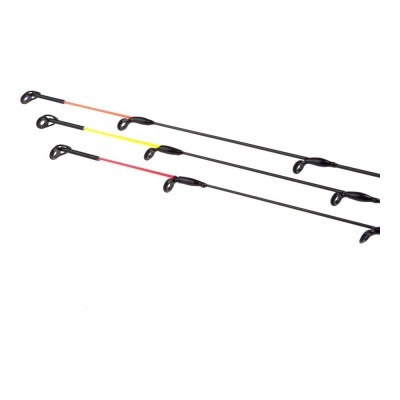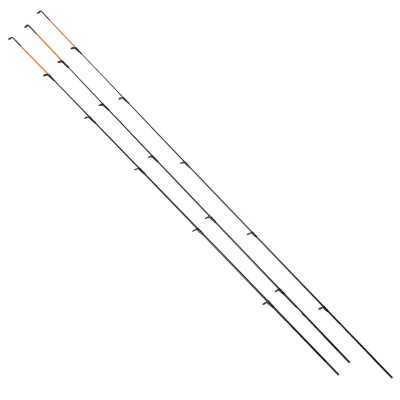Feeder Tips
Feeder rod tops
All feeder rods have several interchangeable rod tips. Some feeder complexes have two, others even four rod tips. The rod tips are usually of different weights and are denoted either by the English weight term - ounces, or by the upper limit of the tip test - grams. Different tip weights are needed not only to cast different weights of bait, but also to give the fish less resistance to biting. The softer the tip, the easier it is to detect a very cautious bite. Even though rod tips are not critically overloaded when casting any weight, it is risky to choose a tip that is too soft. Risky because casting with too soft a tip, more often than not, will cause the line to snag on the ring and you won't even notice how the tip breaks. Even though you are fishing in still water for a cautious fish, if you have to cast very far and with a heavier weight, do not choose the softest limbs if you do not want to change them often.
For more expensive feeder rods, rod tips are always sold separately so that you can always buy extra or replace a broken one. Also, rod tops are simply made in different diameters to fit all kinds of rods, as not all manufacturers sell rod tops separately and it is sometimes difficult to get them. The tops are made of fibreglass or carbon. Carbon fibre tops are usually more powerful, fibreglass ones more slender.
The price of tops depends on the material used and the rings used. More expensive rods also have more expensive tops, and in general the price of tops can range from 2 to 30€. If you want to buy additional tops but cannot find the original ones, you simply need to measure the diameter of the bottom of the tops with a caliper and choose a top with the same diameter. Also available on sale. If you search online, you can find tops for sale with the dimensions of the diameter of the stem. The diameters of the tops range from 2mm to 4,5mm. Don't be fooled into thinking that one tenth of a millimetre is a small difference. This is not the case and you should choose a diameter to the nearest tenth of a millimetre. A diameter that is slightly too thick (0.05mm) is still no big deal and can be carefully scrubbed, while a diameter that is too thin is an unsolvable problem. The best thing to do is to take the part of the rod where the tip is placed to the shop and find a suitable tip on the spot.





